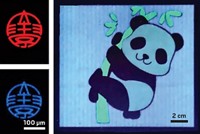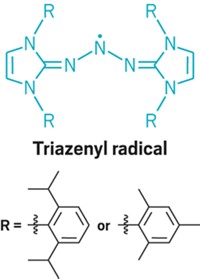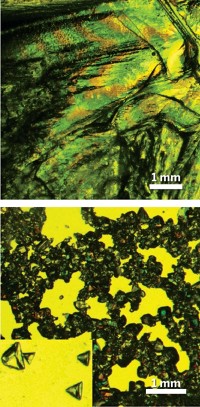Advertisement
Grab your lab coat. Let's get started
Welcome!
Welcome!
Create an account below to get 6 C&EN articles per month, receive newsletters and more - all free.
It seems this is your first time logging in online. Please enter the following information to continue.
As an ACS member you automatically get access to this site. All we need is few more details to create your reading experience.
Not you? Sign in with a different account.
Not you? Sign in with a different account.
ERROR 1
ERROR 1
ERROR 2
ERROR 2
ERROR 2
ERROR 2
ERROR 2
Password and Confirm password must match.
If you have an ACS member number, please enter it here so we can link this account to your membership. (optional)
ERROR 2
ACS values your privacy. By submitting your information, you are gaining access to C&EN and subscribing to our weekly newsletter. We use the information you provide to make your reading experience better, and we will never sell your data to third party members.
Nanomaterials
Quantifying ligand exchange on quantum dots
NMR study pins down equilibrium chemistry of carboxylic acids, amines, and phosphonic acids on lead halide nanocrystals
by Mitch Jacoby
August 5, 2018
| A version of this story appeared in
Volume 96, Issue 32
The intense colors emitted by lead halide semiconductor nanocrystals such as cesium lead bromide, CsPbBr3, make these materials promising candidates for application in television displays, solar cells, and light-emitting diodes. Standard synthesis procedures leave these nanocrystals, or quantum dots (QDs), covered with oleic acid and oleylamine ligands, which chemically stabilize the particles. But these so-called native ligands don’t stay put. They adsorb and desorb from these QDs more readily than they do from less ionic QDs such as cadmium selenide. Because the ligands affect QD optoelectronic properties—and because they often need to be replaced or altered after synthesis for applications—researchers need to quantify the ligand-exchange chemistry on these lead halide QDs. That’s exactly what Sara R. Smock, Travis J. Williams, and Richard L. Brutchey of the University of Southern California have done. Using NMR spectroscopy and other methods, the team showed that the native ligands undergo reversible exchange with long-chain carboxylic acid and alkylamine ligands and also measured those equilibrium constants and other parameters. They also showed that phosphonic acid ligands, in contrast, displace native ligands and bind irreversibly (Angew. Chem. Int. Ed. 2018, DOI: 10.1002/anie.201806916).





Join the conversation
Contact the reporter
Submit a Letter to the Editor for publication
Engage with us on Twitter